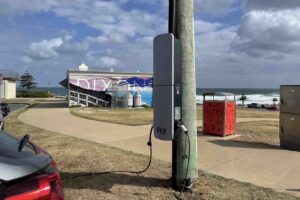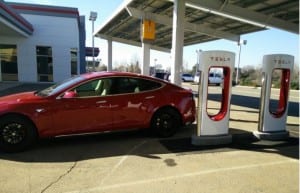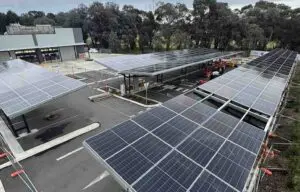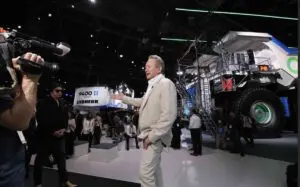A while back, an old buddy and respected journalist accused me of ridiculousness when it comes to my lyrical waxing about electric bikes.
It was a fair call; petrol bikes still dominate and I made the mistake of offending an old mate who still loves his stunning 1980’s Suzuki Katana and doesn’t want to be shamed for his passion. I thought long and hard about this.
Are electric bikes just an early adopter pipe dream? Are they decades away from dominance? Is my enthusiasm for them blinding me to the realities of the world?
Perhaps. A bit.
Nonetheless, for a whole bunch of reasons I just can’t shake the bug.
I still subscribe to petrol bike magazines and the thrill and excitement of petrol bikes hasn’t shifted from the day it first hit me. But what has changed for me is that the technology seems to have plateaued. Petrol bikes seem to evolve in tiny incremental steps now but electric bikes are rapidly leaping ahead and that’s what’s exciting to me.
The race track has always been the ultimate testing ground for vehicle technology and this year’s Isle of Mann TT included the 7th running of the all-electric “Zero” class.
The IOM race circuit is a 60km street circuit that winds through villages, mountains and open roads. It’s lined with stone walls, trees, bridges, precipitous drop off’s and has horrendous weather. It is an insane place to race motorcycle’s and it kills people who make mistakes or have bad luck.
It is arguably the last vestige of old school street circuits where riders are willing to challenge death head on in the name of passion and glory. This year, three poor souls died there doing what they love most and may they rest in peace.
This year’s Zero race was pushed back like most of the other classes due to bad weather but finally took place on the 9th of June. The class remains small with just 14 bikes entering and 8 bikes competing to the finish.
You can read a bunch of reviews on the race here, but being an evangelical electric motorcycle nerd, I’m going to focus on the statistical outcomes and some of the statements by the three heroes who took the podium, because they perfectly tell the story of progress and change.
On the downside, the electric bikes are still only able to run a single lap of the race course, compared to around five laps in the petrol classes. There is still some
work to do on range.
However, putting that aside just looking at speed and lap times the story is tantalising.
I’ve been charting the statistics around race lap speed (the average speed across a whole lap in race conditions) since the start of the series as a measure of progress and this year, the electrics made progress again, continuing to close the gap on the petrol bikes although it was marginal progress at best.
I focus on the relative change compared to the premier class of Superbikes as a measure with a very high bar.
It’s also worth noting that the best lap in the superbike class is a flying lap whereas the electric only do a single lap, from a standing start. As the graphs show after a tough year in 2016, the electrics closed the gap again (in relative terms) on petrol bikes in 2017.
For 2017 almost all the classes went slower than previous years due to the weather conditions and that includes the electrics. However, the difference in speed between the winning superbike lap and the winning electric lap was improved by 1.1% (compared to last year) and is now only 8.5% slower.
Notably, despite all lap times being down as a result of poor conditions, the electrics were only 0.5% down on last years speed, whereas the superbikes were 1.8% down; perhaps evidence of the smoother power delivery of electric bikes, particularly in bad conditions.
The winning Mugen Shinden teams average lap speed came in at 188.52kmh (189.54kmh last year). The superbikes came in at 206.06kmh (209.662kmh last year.)
Another incredible statistic is that in one section of the course (Sulby Straight), the electrics had the fastest speed of 260.64kmh almost 9% faster than the lightweight classes at 240kmh.
Even more interesting were the comments in the post race press conference.
Guy Martin (2nd place Mugen Shinden) is a TT legend and always entertaining. He has crashed at high speed on the course many times and only a day before the Zero race, crashed his petrol bike in a race at around 220kmh and walked away bruised and battered but not seriously injured.
In a sobering interview just following his crash and with three fellow competitors already dead, you could read the fear and questioning on his face.
As he said in the post-race interview reflecting on the life and death challenges “I’m sick to the back teeth of it honestly. TT is great but you can’t ever forget it’s just a motorcycle race. The only good bit I can drag out of it (this year) is the whole Mugen (electric) thing”.
It was at this point in the interview that you could see the same evangelical excitement in his face, hear it in his voice about electrics. He is thrilled by them and can see and feel how rapidly they are evolving “it’s only a matter of time” he said.
Race winner (Bruce Anstey, Mugen Shinden) made similar comments. “The corner speed is already faster than the Superbikes” and “they feel like a 250cc bike”, despite weighing around the same as a Superbike.
All riders commented that riding electric requires your style to be adapted to get the most out of them, something that everyone is still getting used to. “You don’t use big gobs of throttle”; you treat it like it’s made of glass” delicate and progressive.
So clearly there’s still progress to be made – but that is a big fat opportunity in a class that has really only just got in its stride. Several other teams with amazing bikes didn’t make it to the grid this year and a couple of new teams posted impressive results for their first year in.
Comparatively, petrol bikes took 21 years to evolve from 85-100MPH, electric took 2 years. To improve from 100MPH to 108MPH took petrol bikes 10 years and electrics 1 year. To go from 108 to 110MPH took petrol bikes 8 years and electrics 1 year. The next target for electrics is 120MPH and we got close at 119Mph in 2015 but aren’t there yet.
The petrol bikes passed it after only 2 years so we are now falling behind a bit although progress has still been made in relative terms. Our next big milestone is 133Mph (212kMh) for average lap speed which is the current superbike record. 10 years? 5 years? I’m going to say 2 years but we’ll need some luck.
I may be a bit too evangelical but can’t help being blown away at the progress and the sheer excitement of the rider in this emerging new class.













